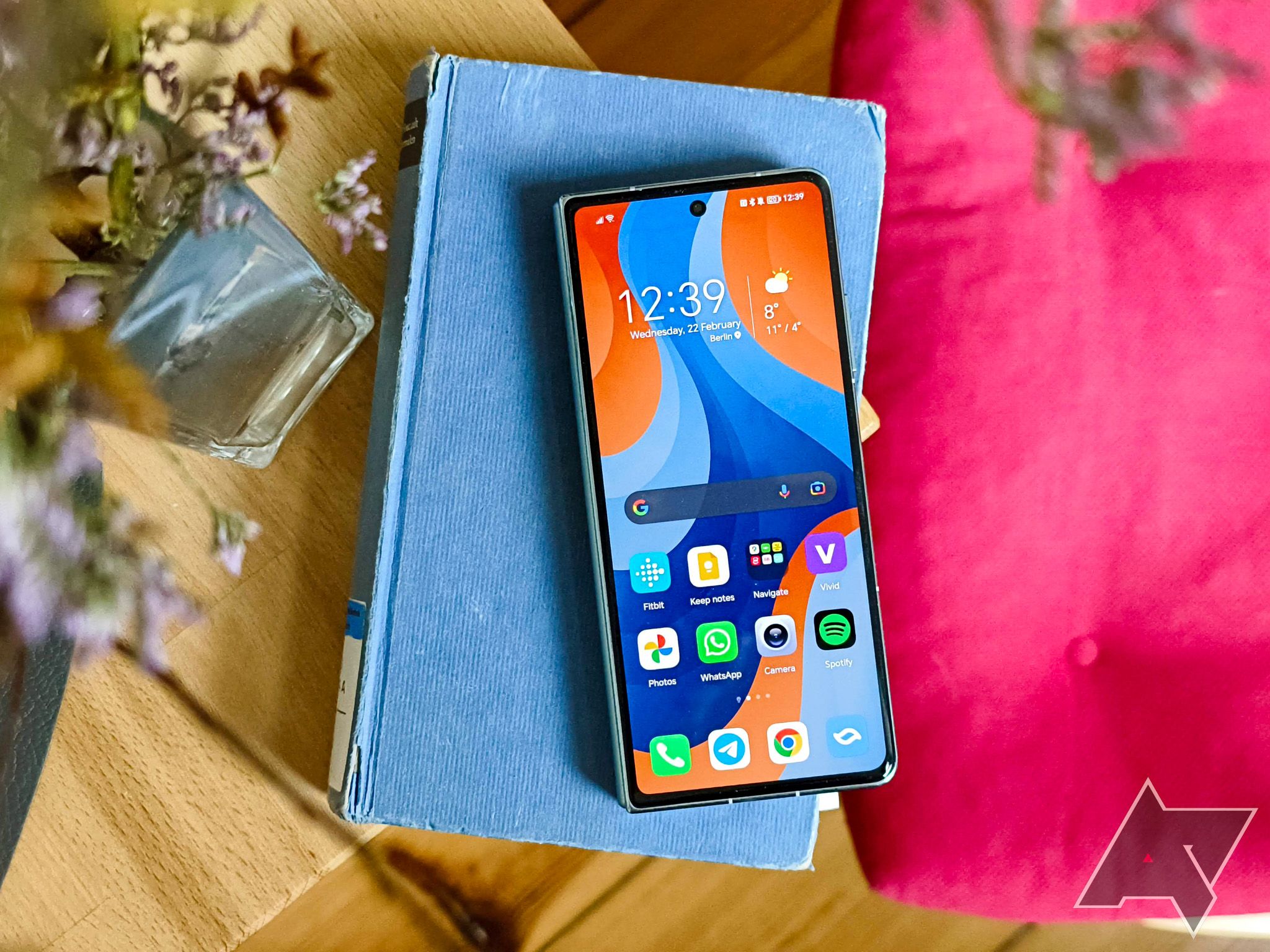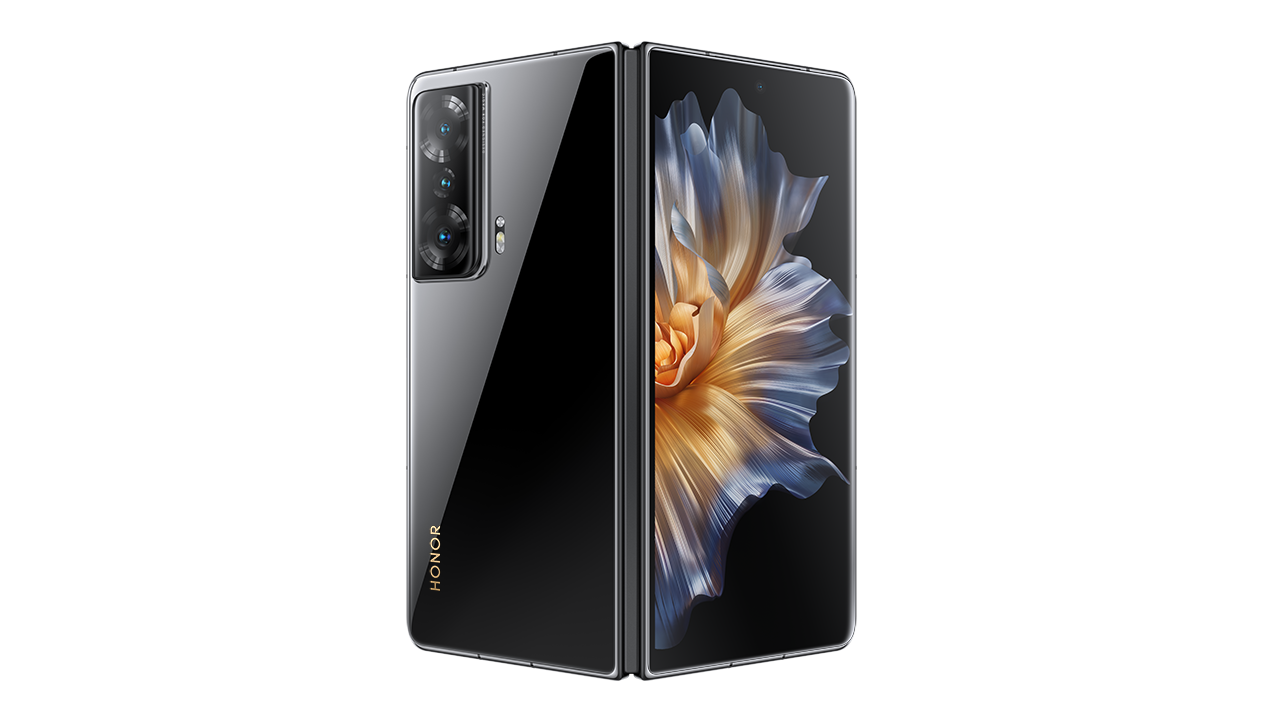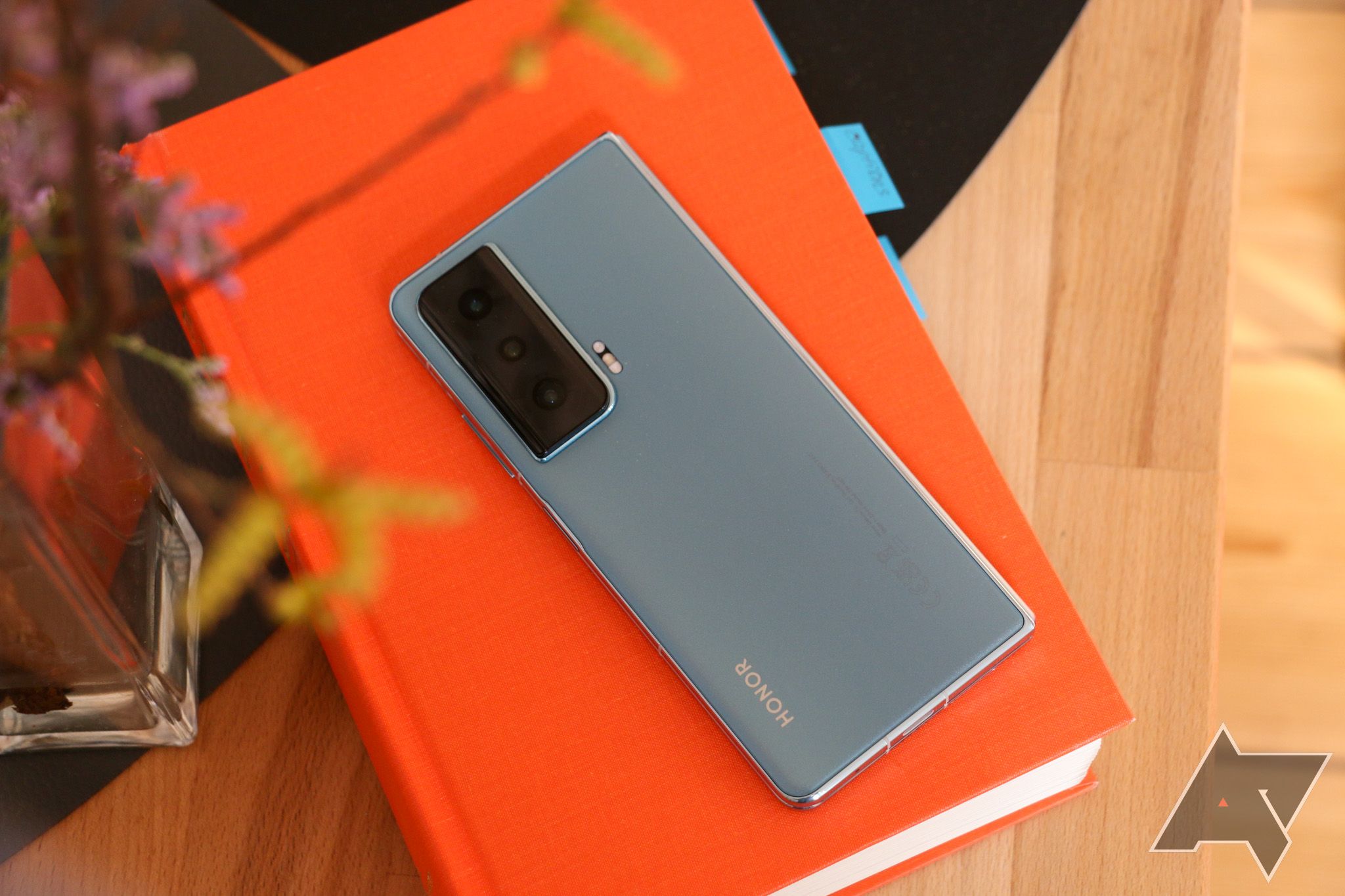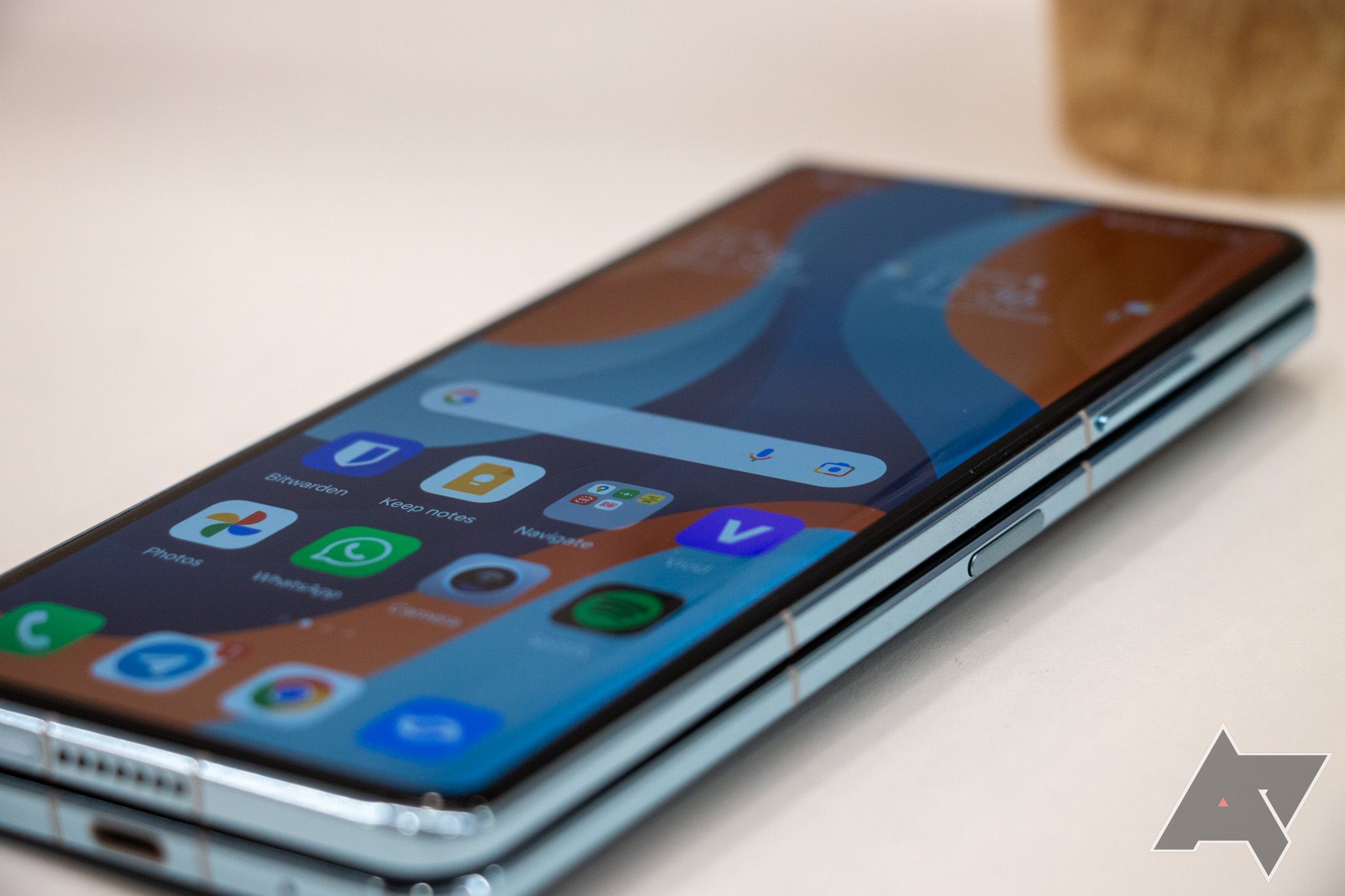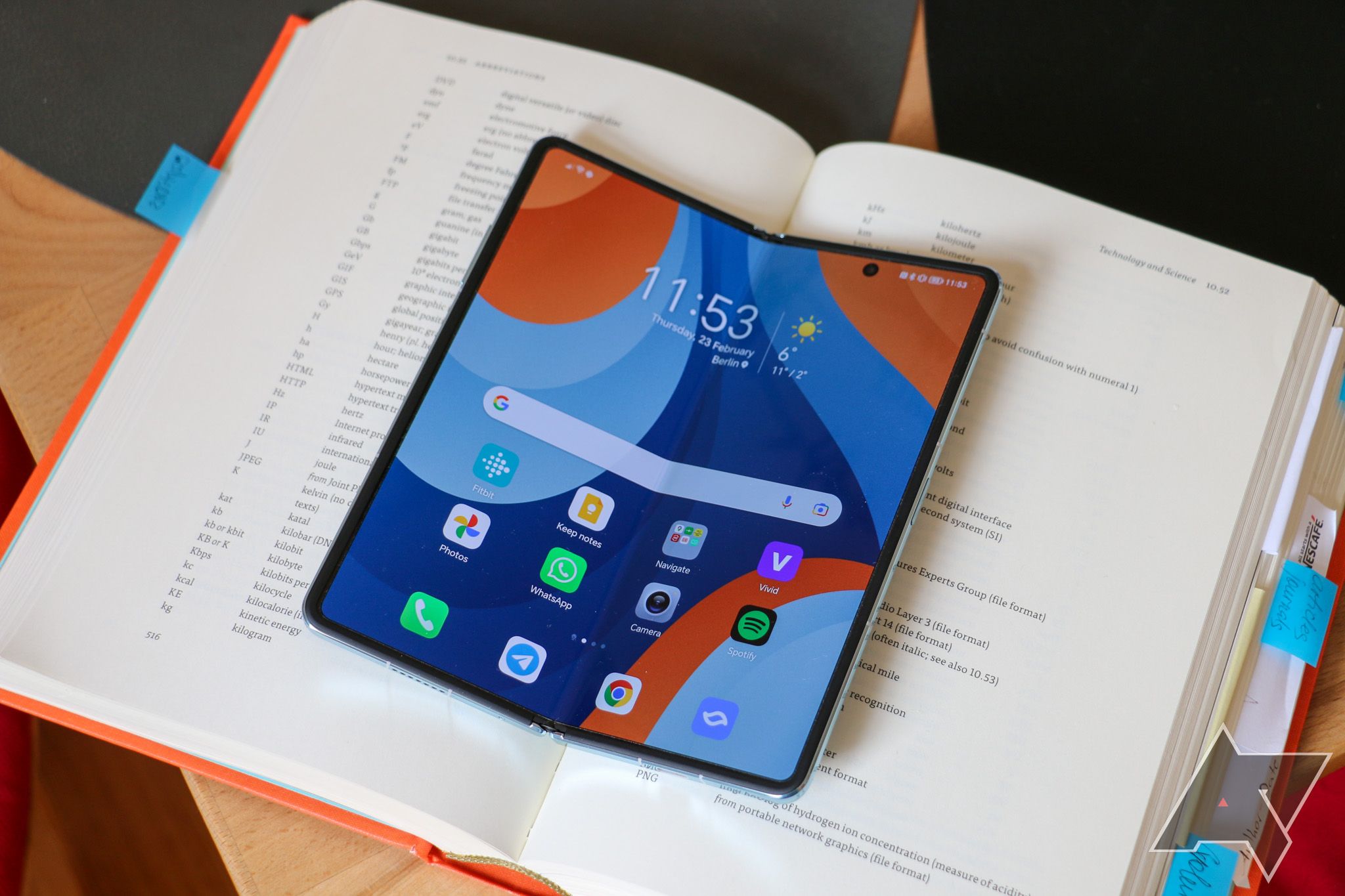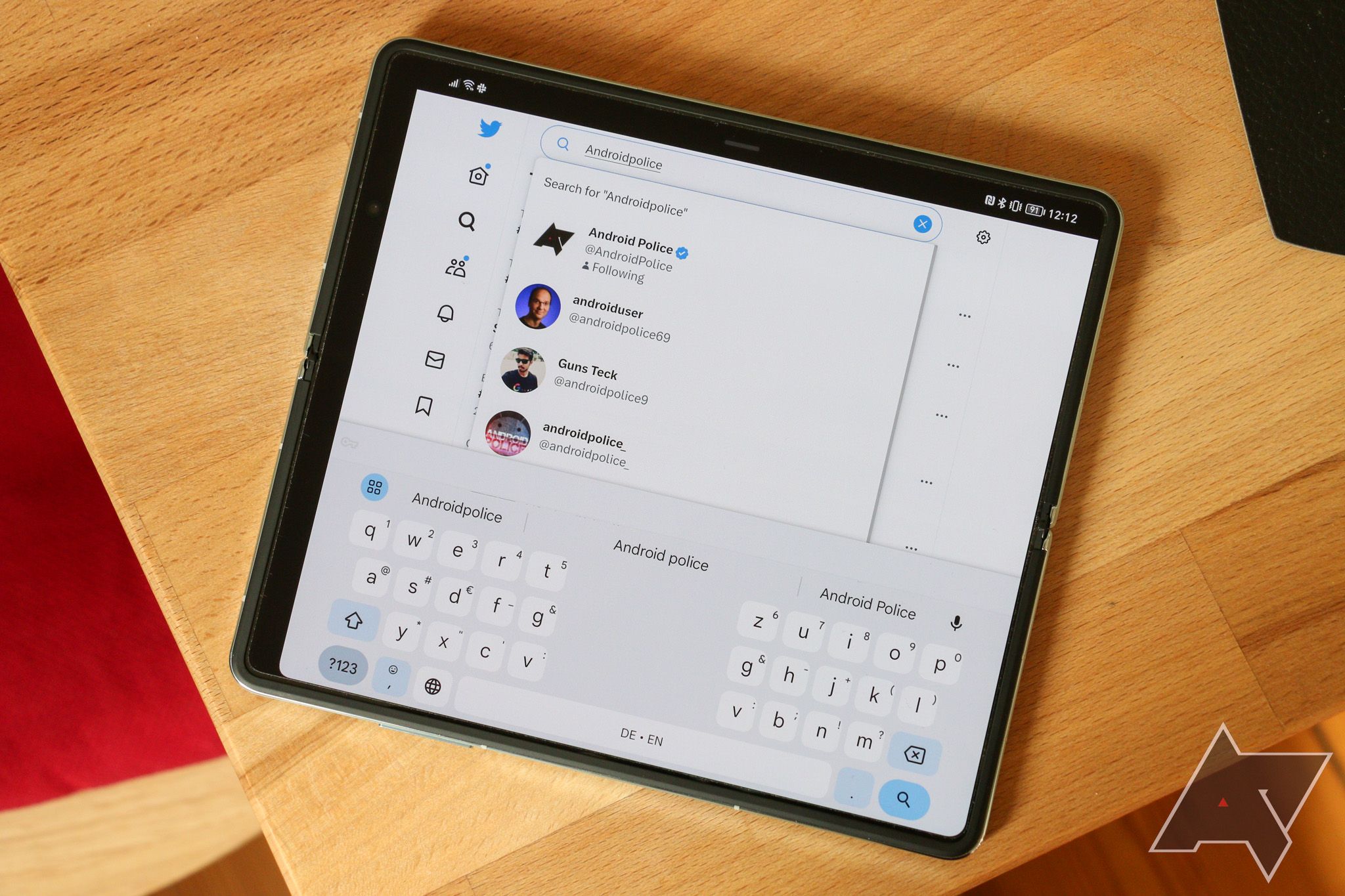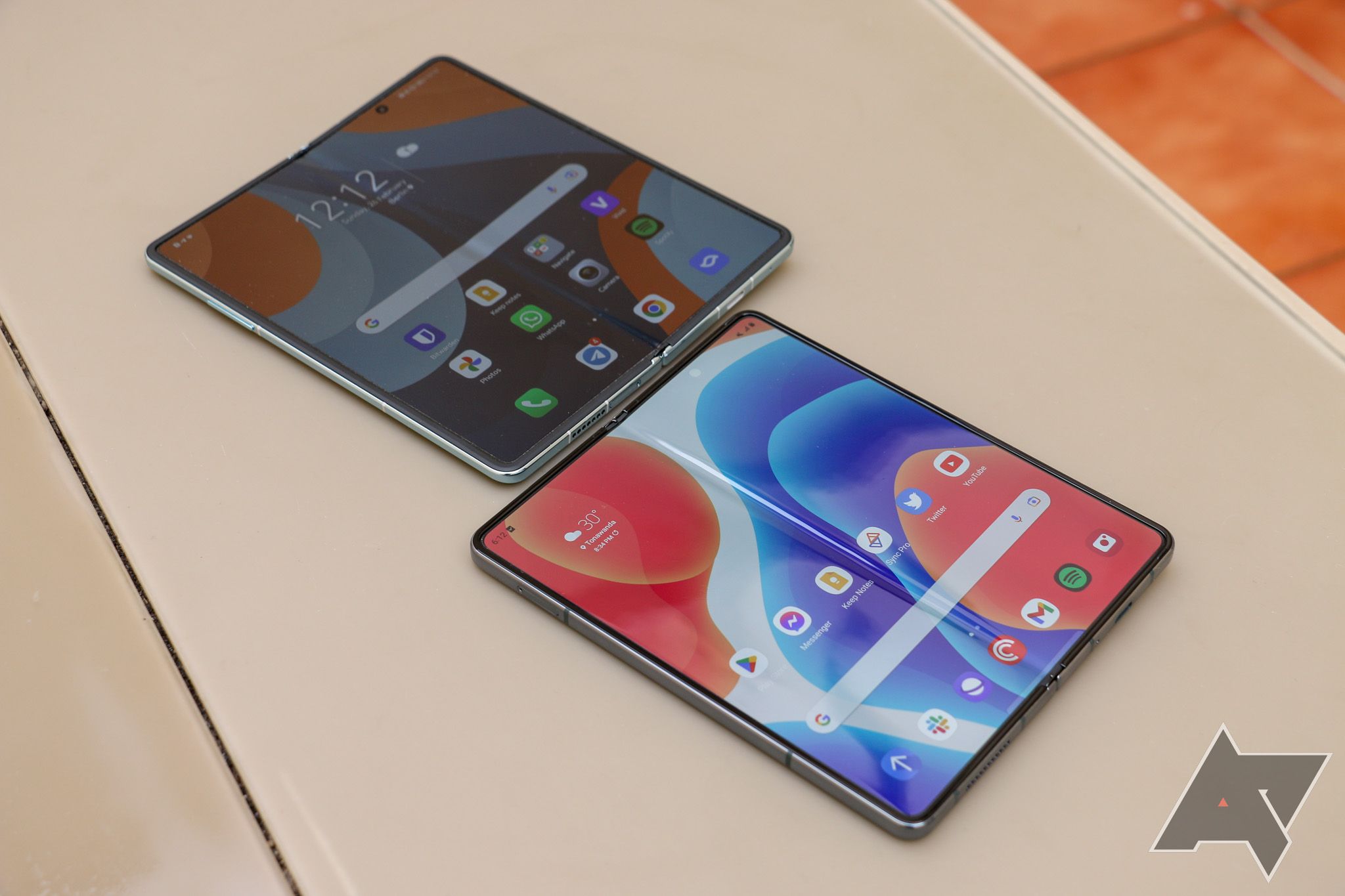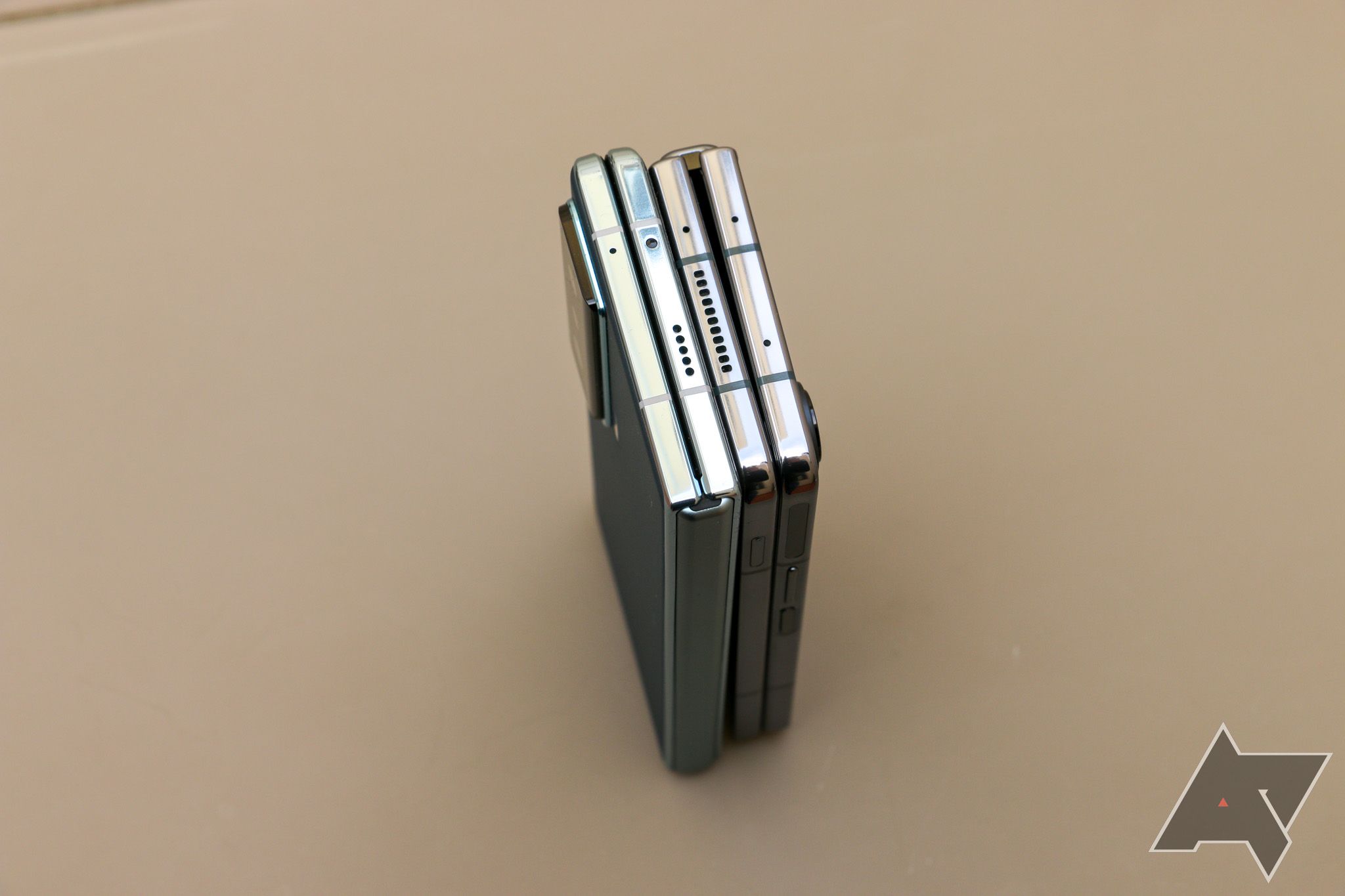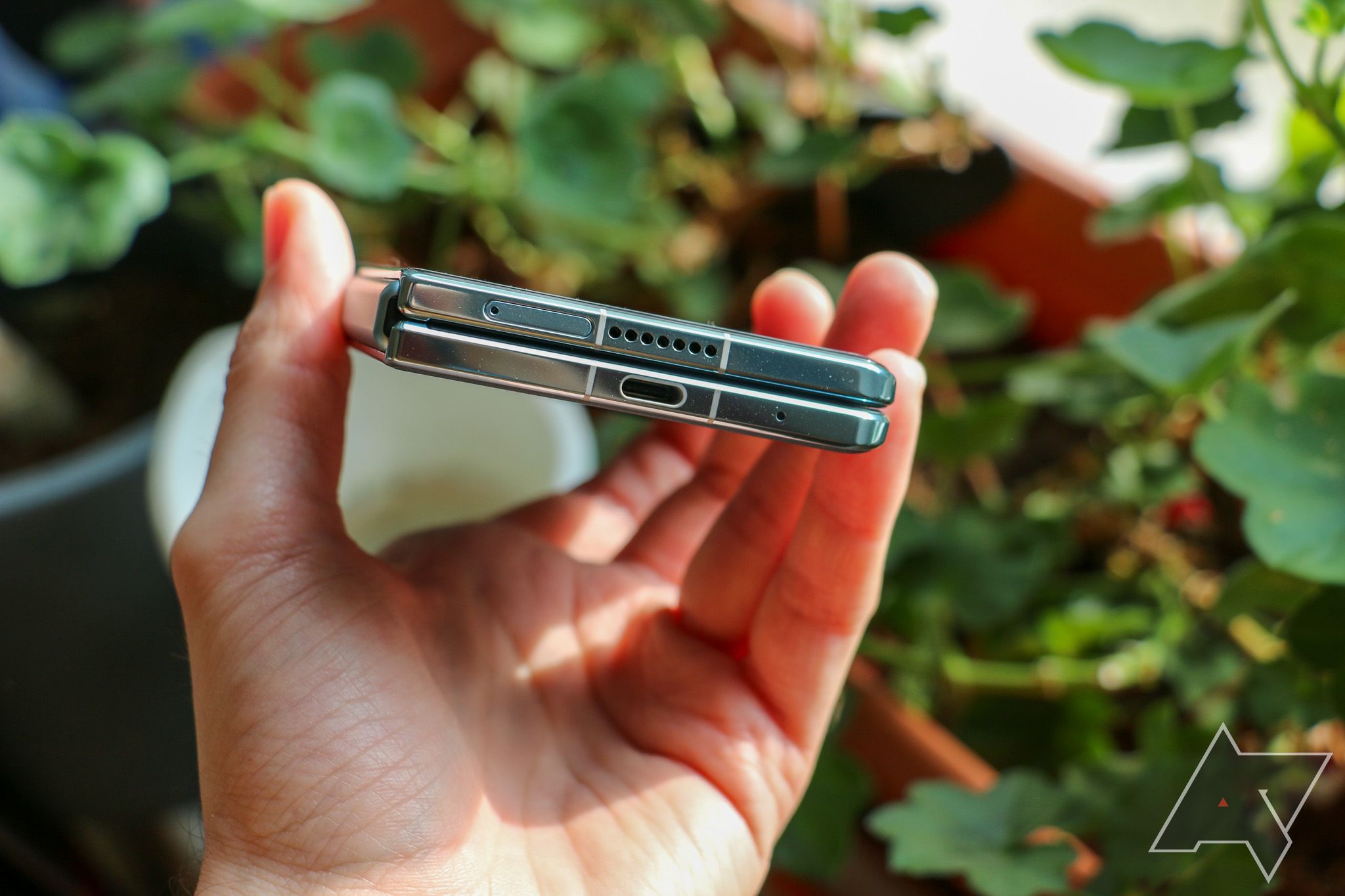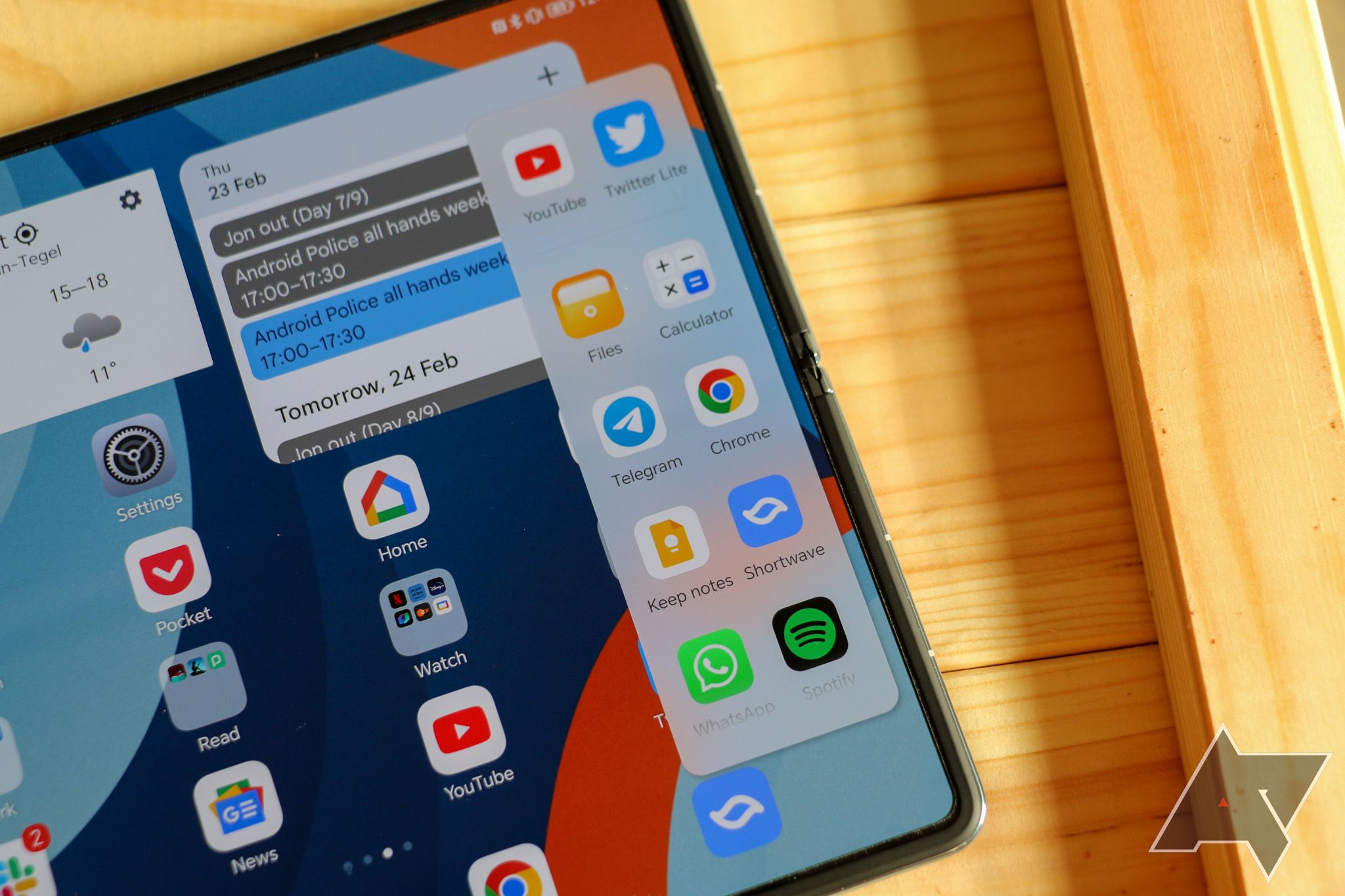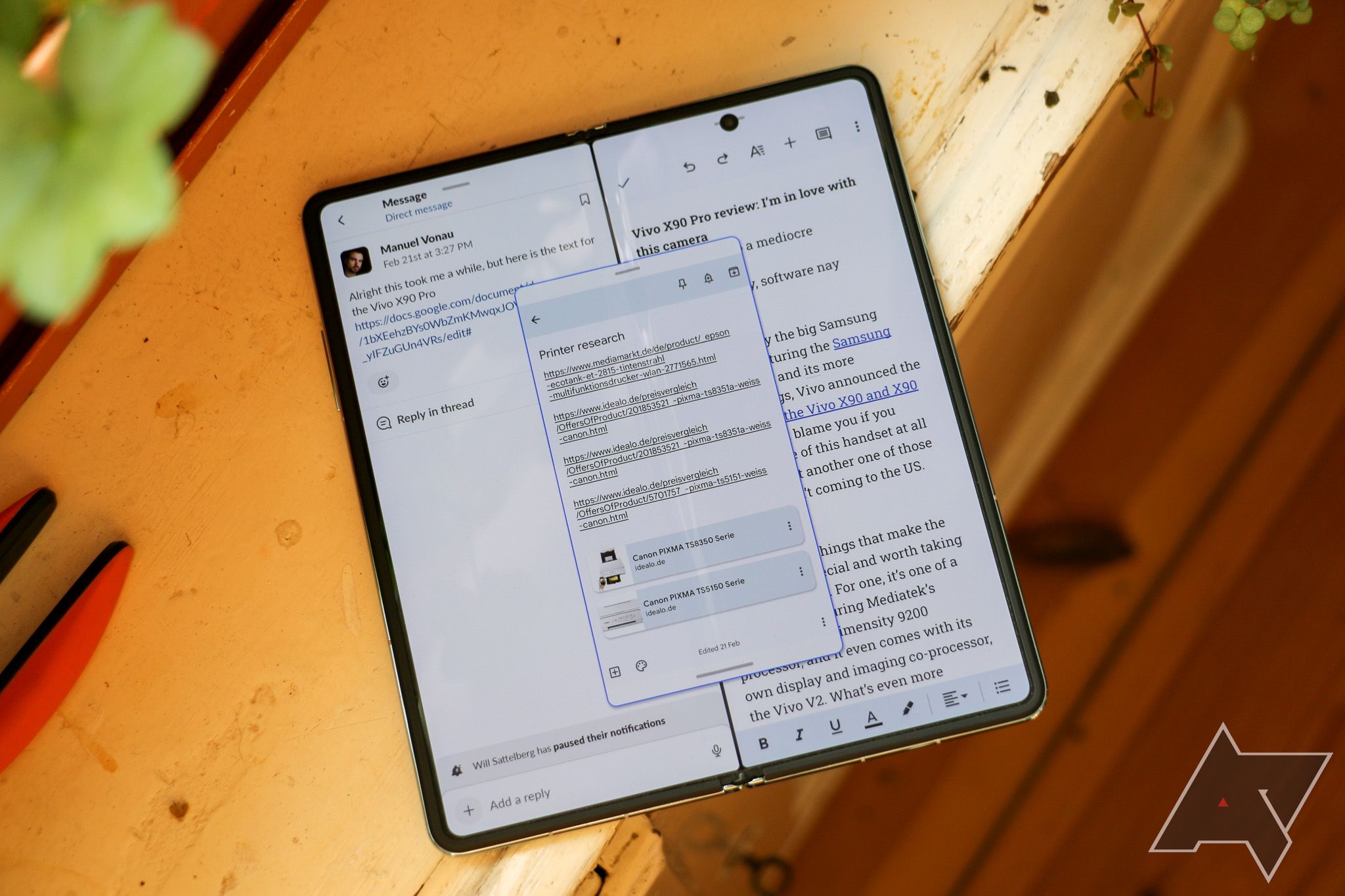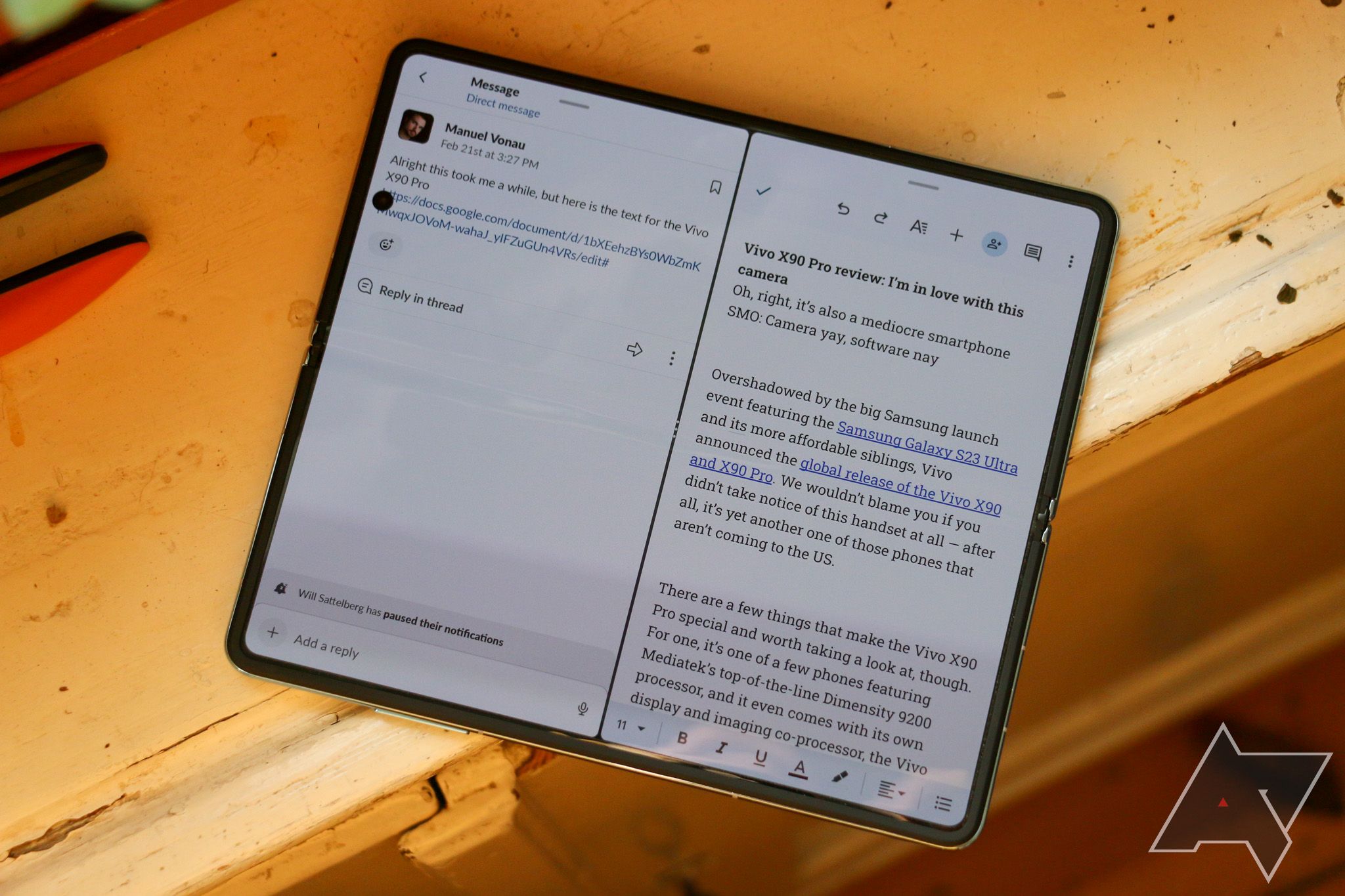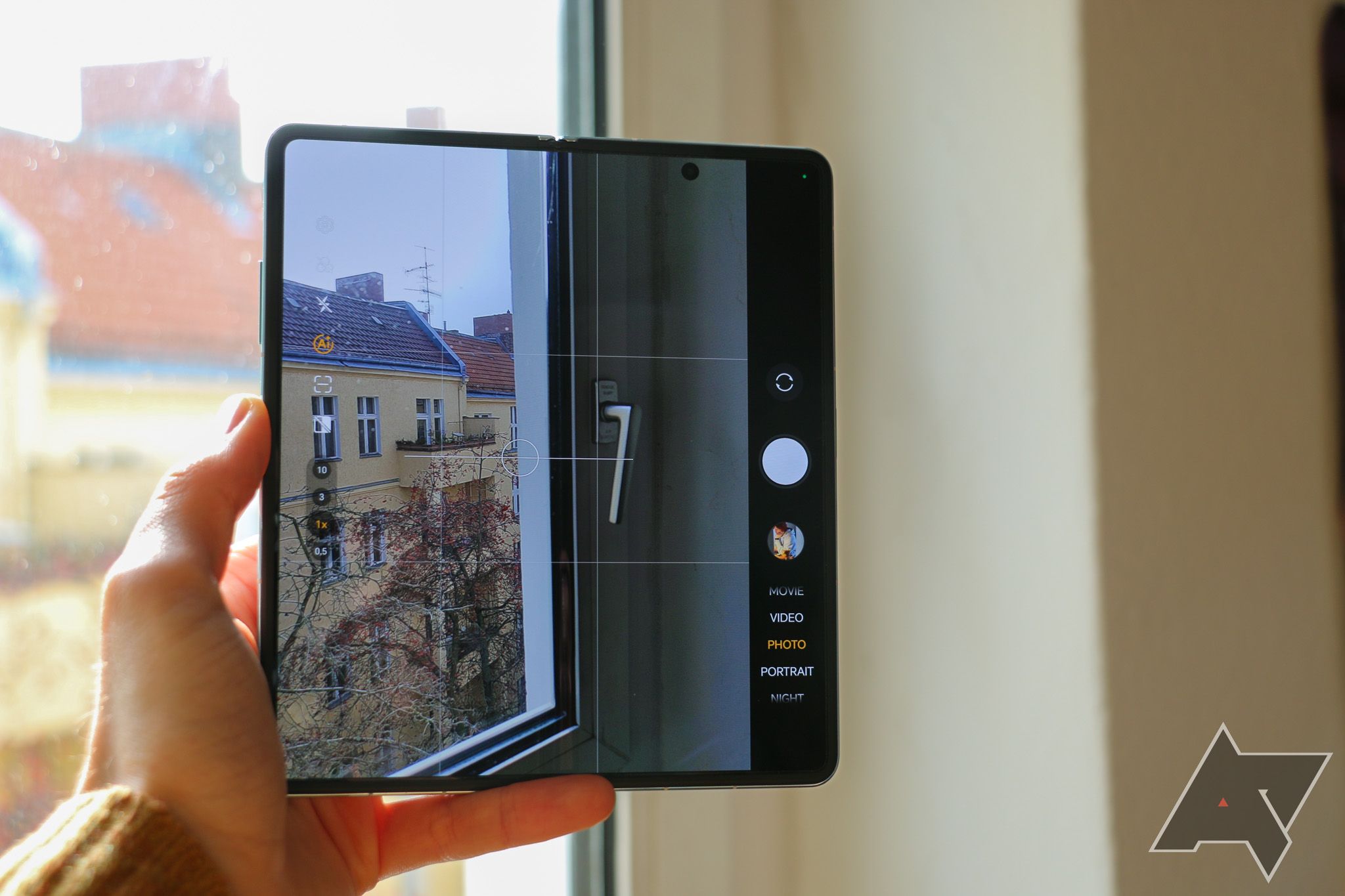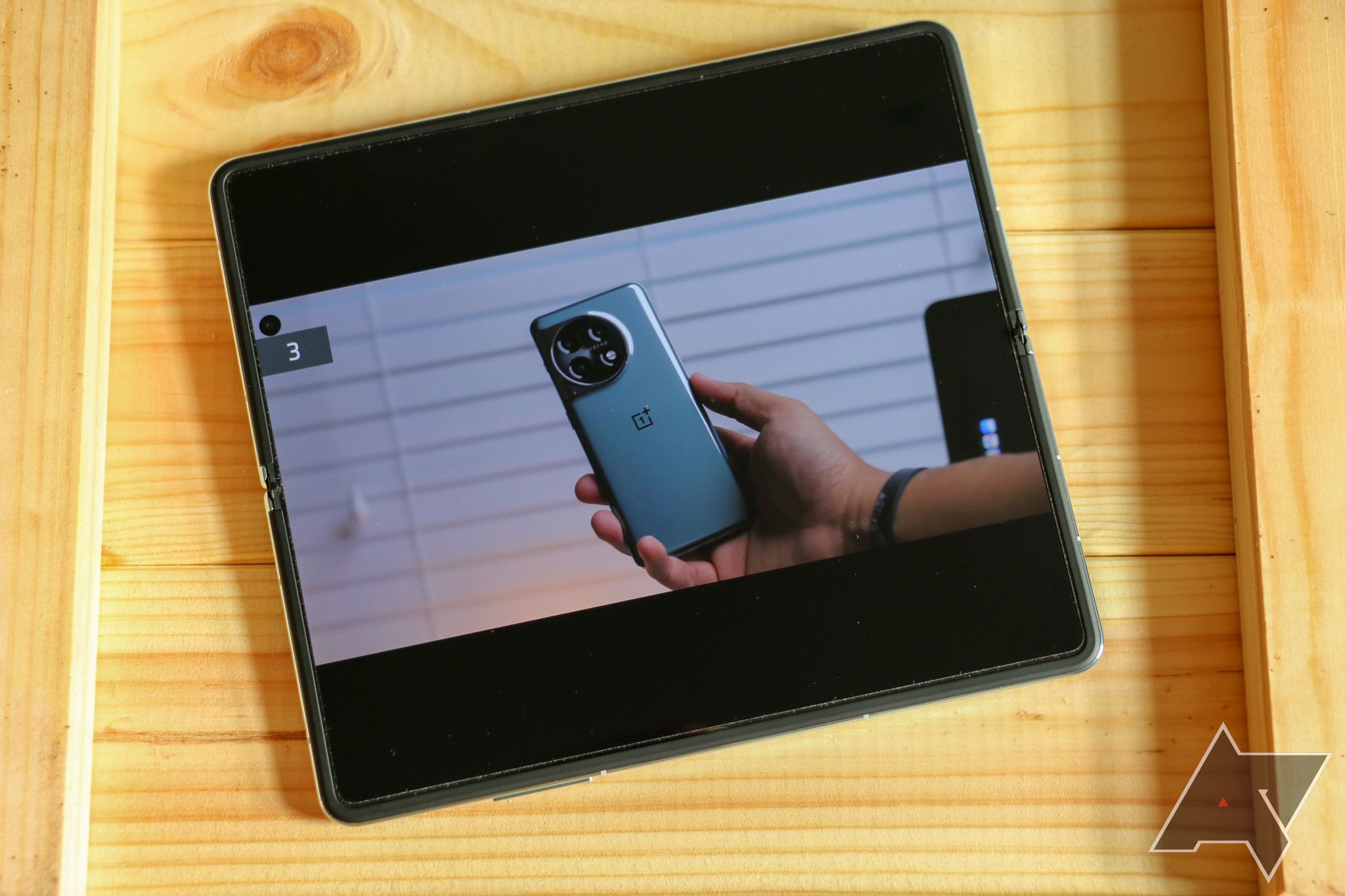Honor first revealed that it would bring a folding phone to international markets in September 2022. It then gave us a preview and hands-on experience of what we can expect in November 2022, and now, at MWC 2023, the company has finally revealed the Honor Magic Vs for its international audience — though the US is still left out in the cold.
But the Honor foldable is still significant. The Magic Vs is the first book-style foldable to compete against the Samsung Galaxy Z Fold 4, and it makes Samsung look old in many departments. Let’s dive into why that’s the case, and why you might still be better off getting Samsung’s current-gen foldable for the time being. At €1,600, it also just undercuts Samsung's €1,800 European price tag.
Honor Magic Vs
- SoC: Snapdragon 8 Plus Gen 1
- Display: Interior: 7.9-inch 90Hz 2272x1984 OLED; Exterior: 6.45-inch 120Hz 2560x1080 OLED
- RAM: 8/12GB
- Storage: 256/512GB
- Battery: 5,000mAh
- Ports: USB Type-C 3.1 Gen 1
- Operating System: Magic OS 7.0 (Android 12)
- Front camera: 2x 16MP f/2.45
- Rear camera: 54MP IMX800 main, 50MP ultra wide, 8MP 3x zoom
- Connectivity: Bluetooth 5.2, Wi-Fi, dual SIM, 5G
- Others: Stylus support
- Dimensions: Unfolded: 160.3 x 141.5 x 6.1mm; Folded: 160.3 x 72.6 x 12.9mm
- Colors: Cyan, Black, Orange, Gold
- Weight: 261g
- Charge speed: 66W wired
- IP Rating: No
- Micro SD card support: No
- The cover display has a usable 21:9 aspect ratio
- The phone folds perfectly flat, without a gap
- Good performance meets great battery life
- 3 OS upgrades and 5 years of security patches
- No IP68 water and dust resistance rating
- Magic OS lacks standard Android 13 features (taskbar, per-app languages, app drawer)
- The interior display’s front camera is placed awkwardly
Design and displays
The Honor Magic Vs looks surprisingly ordinary when it’s folded, thanks to its relatively conventional 21:9 external display. Most phones these days have slightly wider 20:9 or 19.5:9 ratios, but the difference is so marginal that the Honor Magic Vs doesn’t feel cramped when looking at the exterior screen.
It’s a good screen, too. The 6.45-inch display sports a resolution of 2560 x 1080 and a 120Hz refresh rate. It's capable of reaching 1200 nits of brightness, more than enough to provide a good experience outside in the sun. That said, it can't quite compete with the Galaxy Z Fold 4. You’ll only notice that when you put these phones side-by-side, though.
What I really hate is the ever-so-slightly curve to the right of the display only. When folded, it makes the device look even more asymmetrical than it already is, with the sides swapping betwee smooth, rounded corners on the right and a boxy shape along the left-side hinge. It’s very much reminiscent of the 2014 Samsung Galaxy Note Edge — a design that disappeared from the market for good reason. This uneven design is also present on the back, where a protruding camera array sits in the top left corner.
This asymmetrical design is a necessary evil, though, in order for the device to feel rounded along your palms when it's unfolded. Once you open the foldable to reveal the inner screen, the design makes more sense, revealing a 90Hz OLED panel that goes up to 2272 x 1984 and 800 nits of brightness. The rear then also looks symmetrical, with the curves on the left and right matching each other.
As with any other book-style folding phone, there is a noticeably crease in the middle that you will feel when you interact with the screen. Based on my (admittedly limited) experience with the Galaxy Z Fold 4, Honor's crease is definitely more pronounced. The hinge itself also feels less sophisticated than what the Z Fold 4 offers. The Magic Vs offers an incredibly smooth motion that makes it harder to lock in place in mid-fold positions. It’s clear that Honor added some further improvements over the design that we first got our hands on in November, though. With that early unit, it was almost impossible to make in-between states stick, and that’s now definitely a possibility. This is great for watching YouTube videos while sifting through comments or recommendations.
The reason the hinge might feel less sophisticated is because, well, it is — and that‘s actually a good thing. Honor re-engineered it so it consists of only four structural components, ditching gears and other complicated small parts. This makes the folding mechanism much smaller, less prone to breakage, and leaves more room for other internal hardware elements, like a comparatively large 5,000mAh battery. The hinge is also rated for up to 400,000 folds, which is equivalent to 100 folds every single day for 10 years straight.
The biggest caveat of the interior screen is the placement of the front camera, though. It’s in the top middle of the right section of the display, which is fine when you use the phone horizontally. However, it leaves an empty or black bar in the left or right side of the display when you use the phone vertically, losing a large portion of that additional horizontal screen real estate. Samsung solves this with an under-display camera, while Oppo simply moved the selfie camera to the side.
Compared to other phones like the Oppo Find N and N2 or the Galaxy Z Fold 4, it’s obvious that Honor is compromising more on the interior screen than the exterior one, with its lower pixel density, brightness, and refresh rate. That's particularly noticeable when you put the Z Fold 4 right next to the Magic Vs at full brightness.
Honor Magic Vs on the left and Samsung Galaxy Z Fold 4 on the right
Honor's choice might seem counterintuitive at first, but the company wants the Magic Vs to be a first-class phone, not just a device that you’ll always want to use unfolded. The lower-specced interior screen is likely also playing a big role for the Honor foldable’s excellent battery life, which I’ll get to later.
When folded, the Magic Vs is definitely one of the heavier phones I’ve used, but it isn’t outright uncomfortable. Honor’s compact technology is quite impressive, and it’s certainly comfortable to use it when folded. It's also surprisingly great for one-handed use, thanks to its narrow — but not cramped — aspect ratio. It’s just a bummer that the anti-fingerprint, silky-smooth feeling back is rather slippery, making you fear that you might drop it without a case.
The Honor Magic Vs on the left folds completely shut, in contrast to the Galaxy Z Fold 4 on the right
Both displays have a screen protector pre-applied. The one on the outside looks easily removable, but I would recommend leaving the one for the interior screen on, as it will help protect the sensitive flexible OLED panel.
Other hardware and what’s in the box
The Honor Magic Vs is a certainly a flagship phone, but one look at its specs list makes it clear that it was first released in 2022. The Snapdragon 8 Plus Gen 1 in it has been all but replaced by the Snapdragon 8 Gen 2, Qualcomm’s more power-efficient and better performing predecessor. The 8 Plus is still no slouch though, and coupled with 12GB of RAM and 512GB of storage, it should be good for a few years to come.
When it comes to connectivity, we’re looking at a USB-C 3.1 Gen 1 port, Bluetooth 5.2, and Wi-Fi 6. Other features include dual-physical SIM and eSIM capabilities, NFC (though payments don’t work on our pre-release unit just yet), three microphones, and capable stereo speakers. I was also pleasantly surprised by the vibration motor, which feels firm and clicky.
In the box, you’ll find a 66W fast charger included, matching the phone’s top charging speed, but sadly, it still has a USB-A port rather than going all in with USB-C. The provided cable is a custom solution that supports Honor’s 6A fast charging standard. Honor also includes a case, but since this is a folding phone, it doesn’t offer as much protection as a standard smartphone case, and you need to use adhesive to firmly attach it to the device.
Software and performance
I’m not the biggest fan of Honor’s take on Android, and I’m sure that will be true for many people used to software skins from Samsung, Google, and OnePlus. The biggest adjustment is probably the complete lack of an app drawer. Honor inexplicably removed it with Magic OS 7 running on this foldable, based on Android 13. On previous Honor phones we tested like the Honor Magic 4 Pro, it was possible to optionally turn it on. Like on any Android phone, you can just throw one of the best third-party launchers out there on it, but Honor’s gesture navigation doesn’t play nicely with them and makes accessing your recent apps buggy and cumbersome.
Magic OS 7 is missing a few features that Google introduced for Android 13, most of which other manufacturers also include in their phones. Notably, Material You theming and themed icons aren’t available, but even quality-of-life features like per-app language options are nowhere to be found. As a foldable, the Magic Vs could also benefit from the taskbar that was introduced with Android 12L and refined with Android 13, but it's also missing in action.
It’s a bummer not to have these features on the Magic Vs, though Honor offers some solace with its custom solution that we already know from the company’s regular smartphones. When you hold the back gesture, you’re presented with a side-mounted taskbar that gives you quick access to pinned or recently opened apps. Using this menu, apps are opened as floating windows, which makes it a great place for messaging apps, public transit services, the calculator, and more.
Honor also offers a decent multi-window experience. There are the aforementioned floating windows that you can move and resize freely. It’s also easy enough to quickly arrange apps in split-screen interfaces using an always-active floating pill in the status bar at the top. This allows you to move your currently active app to either left or right, and a menu opens that lets you choose any app on your phone to be on the other side. You can then flip these windows to the top and bottom for some apps, and it’s always possible to make one window bigger than the other, too. Once you get the hang of the gestures, it’s a fluid and easy system. I’m just sad that it isn’t possible to save certain pairs as your favorites.
Portrait mode multitasking at the top and landscape multitasking at the bottom
On a positive note, Honor has confirmed to us that it's going to give the Magic Vs three OS upgrades and five years of security patches. This is a big and long-overdue step-up for the company, which previously only promised two years of OS updates and four years of security patches for its Magic 4 flagship series last year. At its €1,600 price tag, this is an important box to tick for the Magic Vs. After all, you probably want to keep using it as long as possible at that price. Honor's new promise is matching Google's, and it only falls short when compared to Samsung's four OS updates and five years of patches policy.
When it comes to performance, I don't have much to complain about. No matter which screen I use, the Magic Vs flies through menus and apps fast and without hiccups. That’s true for apps and full-size websites. The only noteworthy issue I can critique is the fact that the foldable gets pretty hot when playing games while it’s unfolded. It's also the only time battery life takes a significant hit — one of the best parts of this particular device.
Battery life
With the Magic Vs offering two big screens with high refresh rates in an impossibly thin form factor, I was prepared to be disappointed in the battery department. Those worries quickly faded when using the phone. Even on days with extensive mixed usage of both the interior and exterior screens, I didn’t have to worry about keeping a charge at the end of the day. At about four to five hours of screen-on time every day, I was usually left with more than 20 to 30 percent remaining.
This only changes when you introduce gaming to the equation, particularly on the interior screen. The phone gets noticeably hotter than usual that way, and you can watch the battery getting drained. That’s to be expected on a big, high-refresh rate screen, though — you just physically can’t expect a device with a 7.9-inch display and a 5,000mAh battery to be able to compete with some of the best gaming phones out there with a smaller screen and bigger battery.
Even when you play games, you shouldn’t have to worry too much about your phone’s endurance, though. The phone supports 66W fast charging, allowing you to go from a depleted battery to 100% in about 45 minutes. Samsung’s Galaxy Z Fold 4 can’t compete with that.
Cameras
The Honor Magic Vs comes with three cameras on the back. The primary 54MP IMX800 camera is joined by a 50MP ultra-wide and macro shooter, and there is also an 8MP 3x optical zoom camera. In both the interior and the exterior screen, you’ll find 16MP front cameras for selfies, face unlock, and video calls.
Like Honor's regular flagship series, the Magic 5 (and before it the Magic 4), the Magic Vs supports Ultra Fusion Photography. This means that it polls data from all three cameras when you shoot, combining the raw images to the post-processed end result. This is supposed to help when an individual camera isn’t the best for color accuracy, sharpness, or other factors.
In contrast to the Magic 4 Pro last year, which felt like it was lagging and struggling with this technology, the Magic Vs photography experience is smoother. It still sometimes takes an extra second to think after hitting the shutter, and its interface doesn't always make it clear when it’s done taking a long exposure shot. Those are minor gripes, though, and overall, the Magic Vs provides a capable photography experience.
The Honor Magic Vs is still not my favorite camera phone, and it's clear that it's not competing with the top camera smartphones like the Xiaomi 13 Pro. In low-light situations, it struggles more than the competition, taking some extra time to process images that still end up blurrier than you’d like them to. Overall, the camera experience is certainly fine, though. Think of the Magic Vs as a tablet that offers a comparatively excellent shooting experience.
Should you buy it?
The Honor Magic Vs leaves me with a mixed verdict. It’s clear that it offers some of the finest hardware you can get if you’re in the market for a foldable in the foreseeable future, even if it still uses the Snapdragon 8 Plus Gen 1. The battery is incredibly enduring, the hinge is stable, the phone is lighter than it has any right to be, and the crease isn’t too bad. I still don’t love the exterior screen that’s curved to one side only, but that’s the only big hardware trade-off I can point to.
The software is a different beast, though. Honor did find its own way around the foldable form factor, not relying on Google’s taskbar, which feels a bit like reinventing the wheel for the sake of it. On the other hand, the company has used its sidebar long before Android 12L’s taskbar was around, so Honor users might feel right at home. It’s still a bummer that Honor chose not to implement other Android 13 features, like Material You-themed interfaces and per-app language options.
It also doesn’t help Honor's case that 2023 might just be the year of the foldable. Tecno just launched the cheapest book-style foldable yet at MWC, Google is all but confirmed to bring its own Pixel Fold this year, a OnePlus foldable is right around the corner, and Samsung will almost certainly not rest on its laurels with the Samsung Galaxy Z Fold 5. If you’re in the market for a foldable and don’t want to wait for the competition, and you value a great hardware experience more than impeccable software, the Honor Magic Vs is a great choice.
Honor announced that the Magic Vs will grace Europe in May, and it will cost €1,600 in its 12+512GB variant.
Update: We've updated the article with Honor's 3+5 years of software updates policy which was confirmed to us after going live. We have also removed the stylus support mention, as that's only available on the Magic Vs Ultimate Version, which hasn't been launched outside of China.

